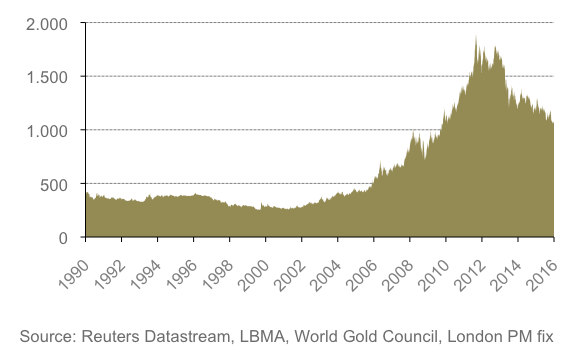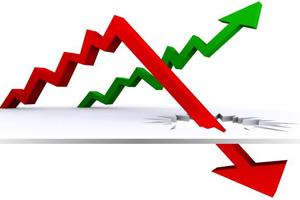The Euro As Reserve Currency
The
currency used by the official sector for the use as an international currency
to perform operations is referred as reserve currency.There
are three main components of foreign currency which are medium of exchange,
store of value and unit of account.
Monetary
authorities usually use this currency as exchange rate tool to obtain monetary objectives,
to intervene in foreign markets and to safe keep wealth. The private sector has
a separate use of foreign currency and mostly use for invoicing. The choice of
international currency is not decided by Government. The private sector
determines the choice of international currency to be used.
The
reserve currency is dependent upon four factors:
1. Share
of the country in the international trade.
2. Macroeconomic
stability
3. Market
development in term of liquidity and breadth.
4. Network
externalities of how other countries are using any currency as reserve
currency.
Status of Euro:
During
post-war era Dollar was dominant because it macroeconomic stability, network
externalities and financial development. In 1990 EMU started debate on the
potential of the euro against dollar. Some researchers argued that the
attractiveness I dollar is due to its liquidity in T-bills as compared to euro.
It is believed that the major limitation on euro is to play international role
is due to the obstacle in full integration of euro government bond market.
One
view point is that having two currencies at a tie as international currencies
would make system inefficient. Studies show that euro is more sound currency as
medium of exchange than the store of value. Researchers also argued that after
monetary union euro’s role would match dollar in international markets.
International investors should invest in euro to diversify and hedge their
macroeconomic risks.
Composition Of International
Reserves:
Official
reserve assets are being well diversified nowadays. The share of euro is
increased after monetary union however still it is lower than dollar. In 1990
the nadir of US was 455 of reserves and deposits. By 2007 it increased to 70%.
However, it declined to 59% by 2006.
The
main reason of decline was adoption of euro and diversification of reserve
currency. Studies show that the reserve managers in Asia respond asymmetrical
to valuation effect. These managers respond to interest rate more than exchange
rates fluctuations.
The
reserve allocation of euro has increased significantly from 19% to 27 % from
1999 to 2003. However, the financial allocation is more in euro region than in
Asia or America. Since 1970 the reserve managers tend to attract more towards
instrument perceived portfolios due to risk-adjusted returns. Now reserve
managers invest in longer –dated debt securities than deposits.
Role
as a Medium of Exchange
Traditionally,
reserve management has been guided by two basic reasons. One is to prepare for
contingencies and the other is an emergent need to intervene in financial
market. This requires for holding reserves in the most liquid form, which is
referred to as ‘liquidity tranche’. It occurs due to the potential need to turn
assets into cash on short notice and at low cost under different market
conditions. This role of medium of exchange may arise in the foreign exchange
market or in government securities market.
Foreign
Exchange Markets
The
choice of the currency for intervention in the FE market is mostly dependent
upon the liquidity conditions in foreign exchange markets. Because when there
is need to influence a bilateral exchange rate, it is sometimes more effective
to do so in a third, more heavily traded currency. While the euro seems to be
as liquid as its predecessor currencies, it is unclear whether the euro has
become more or less liquid compared with the US dollar (Galati and Tsatsaronis,
2003). The results of the 2007 BIS Triennial Survey of Foreign Exchange and
Derivatives Markets reveal that the euro entered on one side of 37% of all
foreign exchange transactions in April 2007. The dollar’s share in foreign
exchange markets was little changed between 1998 and 2007 at about 86%.
Dollar/euro was by far the most traded currency pair in 2007, capturing 27% of
global turnover.
Money and Government Securities Markets
The
choice of intervention currency is influenced by liquidity conditions in asset
markets. Reserve managers typically invest the bulk of their reserves in
instruments with limited market and credit risk.
EMU
increased the attractiveness of diversifying reserves from dollars into euros
by creating the second largest government securities market in the world.
However, there are certain advatages that Dollar has over Euro, which are
discussed as under:
- US
Treasury market that makes it a relatively more attractive destination for
reserves is the large bill
market. The short-term segment of the US Treasury market is much
larger than its euro equivalent, mainly owing to the limited issuance of
treasury bills in the euro area.
- The
other advantage is in terms of homogeneity
and high credit quality of the US Treasury market. There is one
issuer, rated AAA. On the other hand, 12 different issuers participate in
the euro government securities market. Furthermore, several euro area
governments are rated below AAA, and so the average rating of outstanding
euro government securities is AA1.
- The
most important advantage the US Treasury market has over its euro or yen
equivalents is its tremendous
liquidity. The daily turnover of US Treasuries greatly exceeds
that of any other instrument. While turnover is not synonymous with market
liquidity, it can be indicative of the depth of the market, i.e. the size
of the order flow that the market can accommodate without moving prices
(CGFS, 2000)
Hence
we can safely assume that the US dollar retains several advantages over the
euro as a medium of exchange. The US dollar is more widely traded in foreign
exchange markets, and dollar government securities and repo markets are more
liquid than their euro counterparts. This supports the continued pre-eminence
of the US dollar as a reserve currency. Therefore, for intervention purposes the euro is an
increasingly attractive alternative to holding dollars.
Role As Unit Of
Account
Broadly
the Unit of account characteristic of reserve currency fall in two broad
categories:
- In
private use this role is linked to the currency of choice for invoicing.
- In
official use it is linked to the choice of an exchange rate as a monetary
anchor.
This
role heavily depends on the direction of trade among the countries and relative
stability of the macroeconomic policies of the host country which owns the
currency. In summary, evidence from exchange rate co-movements suggests that
the euro plays an increasingly important gravitational role. Ceteris paribus, this
would tend to boost the euro’s share of global reserves over time. The US
dollar, however, is still the most important currency along this dimension.
Since 2002, the US dollar has depreciated against many currencies, and so the
higher co-movement of currencies with the euro may reflect temporary dollar
weakness rather than a long-term increase in the euro’s influence.
ROLE
AS A STORE OF VALUE
For
this role of a reserve currency it is important for the reserve managers to
choose a currency which has a rather reliable future in terms of its future
purchasing power. Hence, this aspect mostly relies upon the future prospects of
a country. The store of value aspect of reserve currency is directly related to
the investment policies of the governing authority as well as the level of
development of financial instruments available for investments in that currency
for gaining exposure to, or hedging, these risks.
CONCLUSIONS
The
main theme of this paper was to investigate how the euro’s role in
international financial markets has influenced the use of euro-denominated
assets as official reserves. The introduction of the euro in 1999 as a single
currency for multiple countries, which were highly developed and extensively
involved in trade, resulted in extensive debate in academia as well as
professional circles regarding future role of Euro and fate of Dollar. With extensive development of euro financial
markets, there is a view that Dollar might lose its position as a dominant
reserve currency at global level. Nevertheless, in terms of size, credit
quality and liquidity, dollar financial markets still have an edge over euro
markets. This is the main reason why Euro is currently not in a position to
compete with Dollar in the international market.
Author: Zarmeen Mushtaq , Sofia Khurrum







